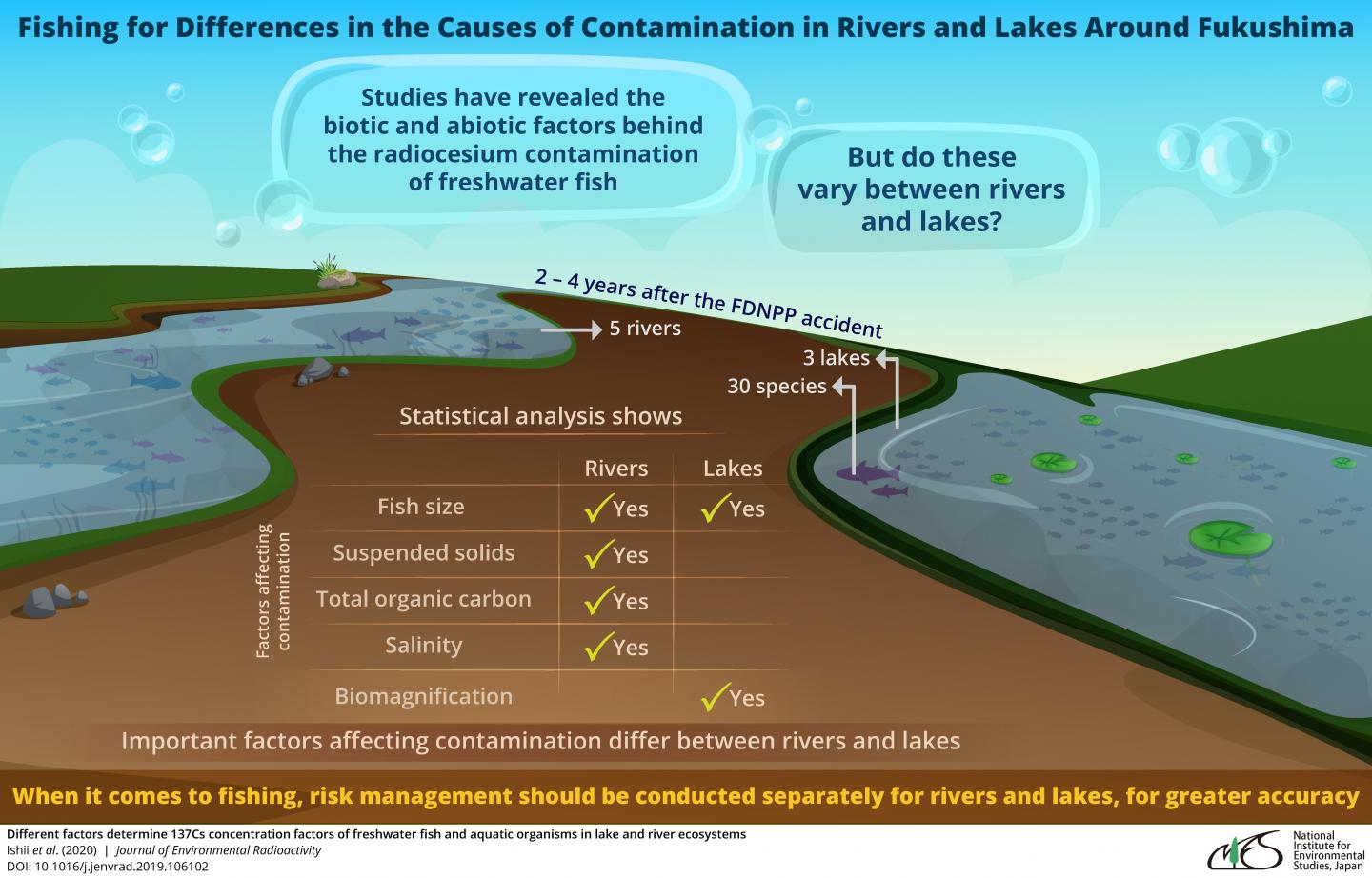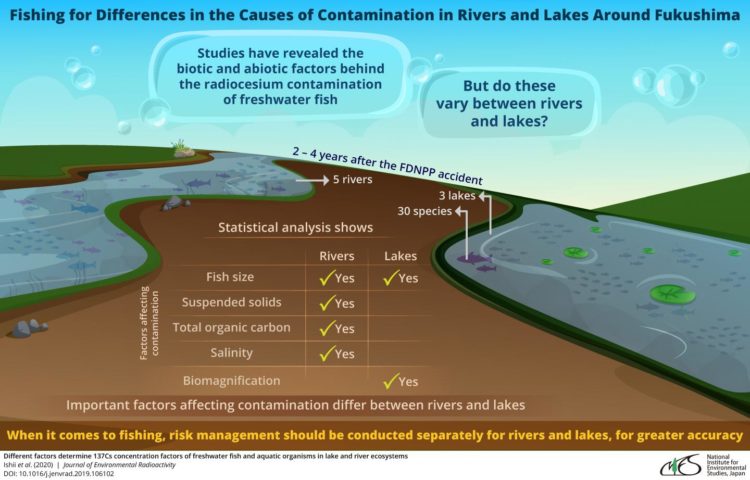Considering the specific ecosystem is vital when investigating the radioactive contamination of freshwater settings, new study says

Credit: NIES
In 2011, when the Fukushima Dai-ichi Nuclear Power Plant (FDNPP) accident occurred, radioactive materials leaked out into the surrounding land and water bodies, and these became highly contaminated. Consequently, to ensure no imminent risks to the health and safety of the people living in the region, fishing in lakes and rivers in the area was restricted, with no indication of when the ban will be lifted. Scientific efforts to measure the contamination levels of the natural resources of the region, and predict when it will become safe to use them, began soon after the incident and have been ongoing. Research–conducted in the aftermaths of the FDNPP incident and others that came before it, such as the Chernobyl accident–has, so far, determined the biotic and abiotic factors affecting the accumulation of radionuclides in fish. The insights thus gained have helped predict and manage contamination in the environment at Fukushima.
But what remains to be studied is whether these underlying factors differ among ecosystems, and if they do, then how. Addressing this question, a group of scientists from the National Institute for Environmental Studies, Japan, led by Dr Yumiko Ishii, analyzed the monitoring data of 30 species of fish and aquatic organisms from five rivers and three lakes in Fukushima. This they did two to four years after the FDNPP accident. In their study, published in Journal of Environmental Radioactivity, they statistically correlated radiocesium measurements with a number of biotic and abiotic factors. Radiocesium, particularly cesium-137, has a long half-life, or decay period, of about 30 years, and is the primary contaminant in the area. As Dr Ishii explains: “After the FDNPP accident, radiocesium has become a major contaminant in Fukushima, and the risk of exposure to its radiation has become a topic of considerable concern.”
The factors that the scientists considered were fish characteristics–feeding habit, body size, and habitat–and water chemistry–salinity, total organic carbon, and suspended solids concentration. Their analysis revealed that the factors affecting radiocesium levels in riverine organisms did not necessarily influence radiocesium levels in organisms from the lake. Specifically, suspended solids concentration, total organic carbon, and salinity were significant factors in rivers, but not in lakes. Feeding habits had a major influence in the case of piscivorous fish in lakes, but not in rivers; this was evident from the fact that significant biomagnification of radiocesium (i.e., the increase in its concentration as it travels up the food chain) was observed only in lakes. Lastly, fish size had noticeable influence in both lakes and rivers.
Overall, these findings show that biotic and abiotic factors affecting radionuclide accumulation in fish are clearly dependent on the ecosystem–and they differ between lakes and rivers. The findings of this study could potentially lead to the implementation of better and more efficient environmental disaster response strategies in the future. As Dr Ishii concludes, “Considering lakes and rivers separately when looking at the effects of radioactive contamination will lead to better and more accurate environmental risk management.”
###
About National Institute for Environmental Studies (NIES), Japan
The National Institute for Environmental Studies (NIES), Japan, was founded in 1974 as the only research institute in which interdisciplinary research on the environment is conducted. Continuing its excellent work, it has grown to become the foremost in the field and has solved a variety of environmental problems, thereby assisting in environmental policy-making in Japan. In 2016 and 2017, the institute expanded to establish a disaster research branch in Fukushima and an office in Lake Biwa. In this second decade of the 21st century, the institution continues its legacy of advanced research with projects involving satellite observation of the Japan environment and a Children’s Study Program. Standing on the four pillars of its motto–Synthesize, Integrate, Evolve, and Network–the NIES looks forward to cultivating a robust domestic and international research network, and developing ways to communicate more efficiently with both the scientific community and the society.
Website: http://www.
About Dr Yumiko Ishii from NIES, Japan
Dr Yumiko Ishii is a senior researcher with the Environmental Impact Assessment Section at the Fukushima branch of NIES. She specializes in the radiocesium contamination of ecosystems. She has several research publications and presentations to her name and is the lead author of this paper.
Media Contact
Yumiko Ishii
[email protected]
Related Journal Article
http://dx.





